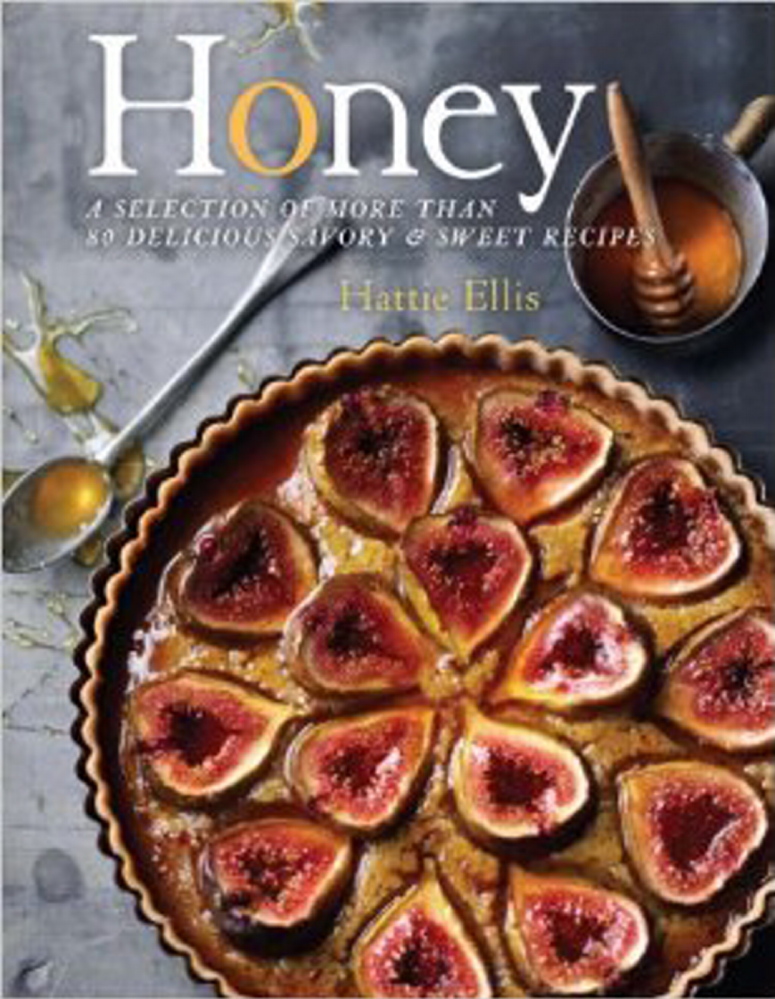Everywhere I go these days, I hear people saying “Awesome!” to matters that aren’t remotely that (“You’ll be here at 8? Awesome.”). Not my honey, a reticent Yankee to the core. Ask for his opinion – of a movie, a slice of cake, a novel – and 90 percent of the time, he’ll reply, “Not bad.”
It seems to be a highly flexible phrase, sometimes a compliment, sometimes not. His use of it can drive me crazy.
Yet I find myself applying those very words to “Honey: A Selection of More than 80 Delicious Savory + Sweet Recipes” by Hattie Ellis, a British cookbook recently published in the United States. It doesn’t rise to the level of awesome (most things don’t). But it’s not bad, and I mean that in a good way (mostly).
I love honey (the sweetener. Thank you, bees.). But honestly, what drew me to “Honey” (the book) were the photographs. They are many, and they are stunning. They made me want to cook, and they made me want to eat.
If only the prose had lived up to the pictures. I had to search for the name of the photographer in the book, which didn’t seem fair, but I didn’t have to search far to find pedestrian sentences like this one: “It has been said that when something is overlooked it is the poets, the naturalists and the children who see it. How often have I seen a child crouched down looking at a bee!”
Granted, I’m an editor, and if I’m going to spend $19.95 for a cookbook when I could just Google free recipes – zillions of free recipes – I’d like to enjoy the writing as much as the cooking. But most people probably don’t judge cookbooks by their sentences. So how are the recipes?
Of those I tested, a simple Chicken with Honey, Lemon and Thyme was my favorite; easy, tasty and fast and – excepting the fresh thyme – all pantry ingredients; it’s just right for a weeknight supper. I’d say much the same of Honey-Lime Salmon with Noodles; it didn’t rock my world, but I’d happily eat it again any Tuesday night. Chorizo with Wine and Honey called for just the three ingredients in its name, and yet the sauce failed to reduce as described. I’ve a new stove – was it operator error? Chewy Honey Bites made for a pleasingly spiced, deeply honey-imbued afternoon pick-me-up, while Honeyed Dates, an Arabic recipe that uses saffron, rosewater and poppy seeds, made an exotic snack and is typical of the intriguing-sounding, globe-trotting recipes – ranging from breakfast to dinner, tea cakes to drinks – that Ellis has collected in “Honey.”
Finally, a small suggestion for the publisher: Maybe next time, you’ll want to translate such Britishisms as “plain flour” into American English. All-purpose flour, presumably? Similarly, as self-rising flour is a specialty ingredient on this side of the pond, consider telling your American cousins how to replicate it from “plain” flour, baking powder and salt.
All in all, though, not bad.
Chicken with Honey, Lemon and Thyme
“You need to be careful about baking honey because it can burn if left too long, but if you combine it with lemon juice and a little oil, then it can cook for a bit longer,” Hattie Ellis writes. “The chicken skin should be nicely burnished by the time the chicken thighs are cooked.”
When I made the dish, I had no fresh thyme, so substituted a little dried. Also, I threw a small dried red chile into the marinade for a bit of heat, and I brushed the chicken with the marinade occasionally as it baked. If the chicken skin is not burnished when it’s done, run it under the broiler for a few minutes.
Serves 4
8 small or medium chicken thighs, with skin and bone
3 tablespoons honey (a medium or dark one such as thyme honey works well)
1-1/2 tablespoons olive oil
Juice and finely grated zest of 1-1/2 unwaxed lemons
2-3 garlic cloves, finely chopped
A small handful of thyme stalks
Sea salt and freshly ground pepper
Slash each chicken thigh three times, going down to the bone. Put the chicken in a wide, shallow baking dish. Drizzle the honey over it and then the olive oil. Pour over the lemon juice and scatter the zest over the chicken. Scatter the garlic and thyme stalks over the chicken.
Season with plenty of salt and pepper. Rub the mixture thoroughly into the chicken and, if you have time, cover and leave to marinate in the refrigerator for at least 1 hour or overnight.
Take the chicken out of the refrigerator 15 minutes before cooking if it has been in there for more than a couple of hours.
Preheat the oven to 375 degrees F. Line a baking sheet with baking parchment. Place the chicken thighs on top, ideally so they are not touching. Cook for around 30 minutes – after about 20 minutes, turn the baking sheet round and move the outer pieces to the center to ensure the chicken cooks evenly.
Serve with a green salad and potatoes; you can cook potato wedges or baked potatoes in the oven along with the chicken.
Send questions/comments to the editors.



Comments are no longer available on this story